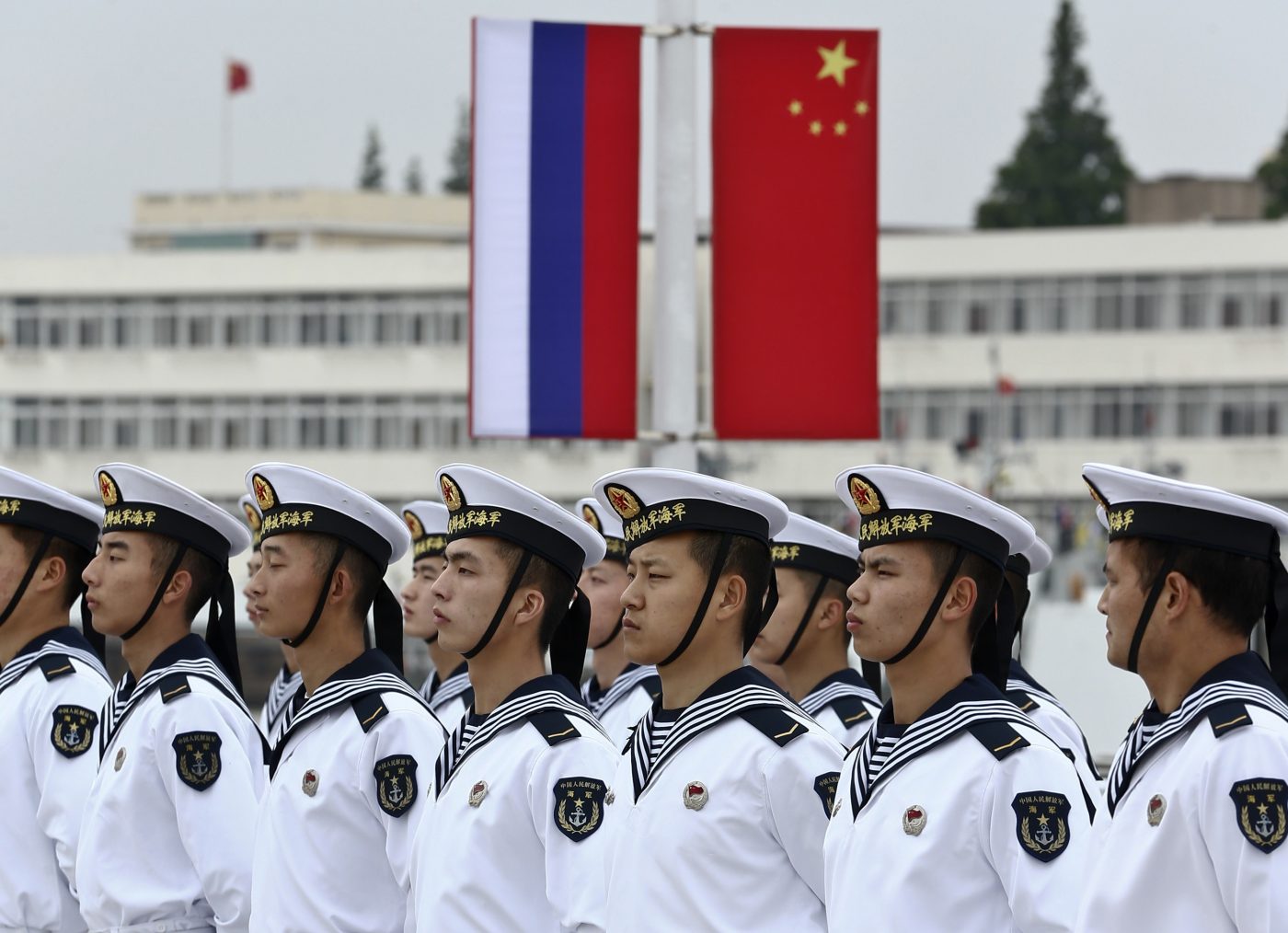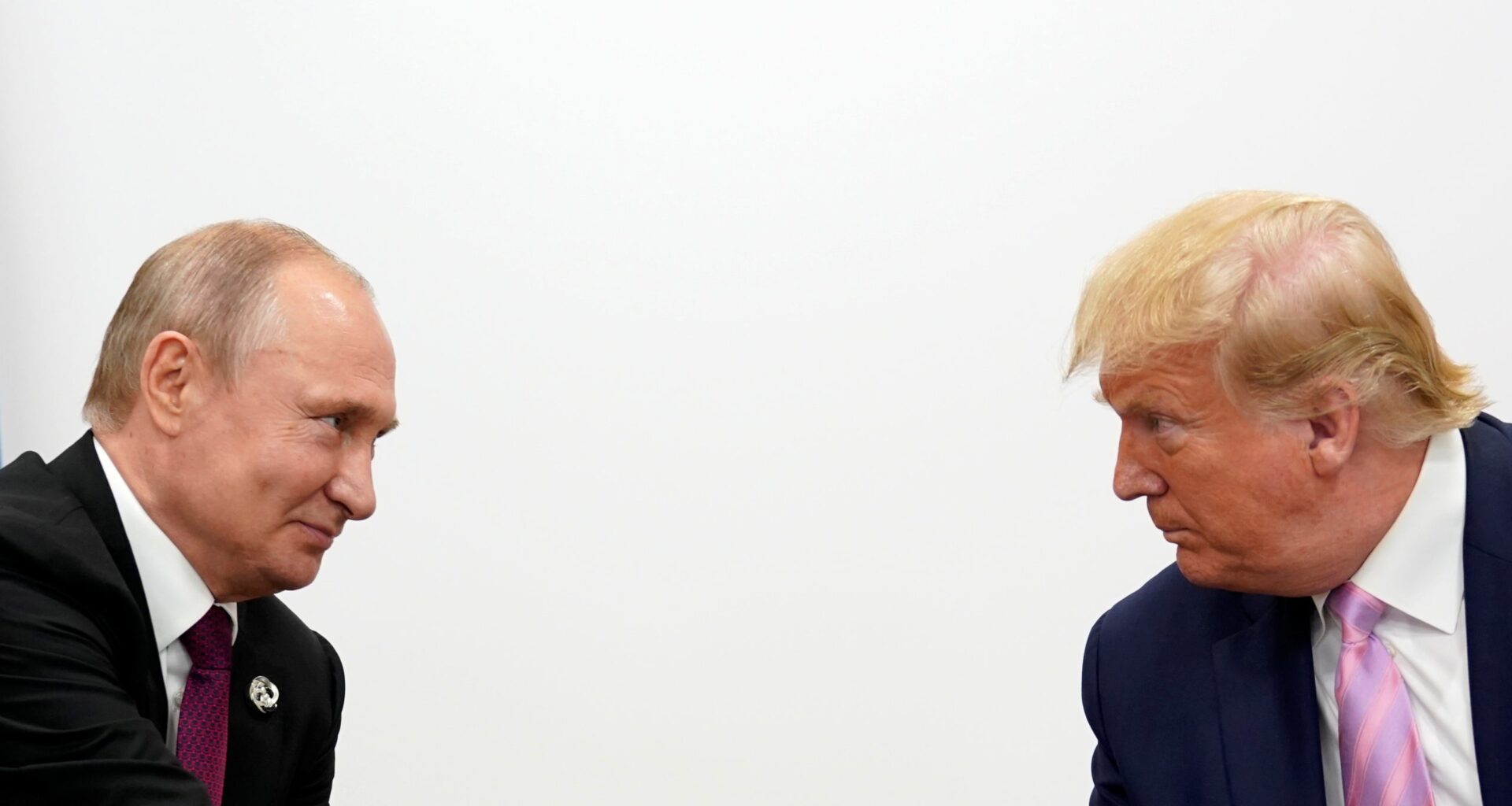As Donald Trump and Vladimir Putin make their way to Alaska for August 15 talks on the future of Ukraine, Europe is nervous — and rightly so.
As two of the world’s superpowers grope for a solution that meets their own interest, Europe and Ukraine find themselves in the unfortunate position of hoping that the summit delivers nothing of substance. They fear any deal that emerges from the talks at Joint Base Elmendorf-Richardson, just outside Anchorage, will come at their expense.
In their anxiety, Europe and Ukraine are aligned. In the broader strategic context, however, Europe’s posture comes with its own costs. Indeed, Ukraine today finds itself trapped between two equally dangerous strategic illusions. The first is an American belief that Russia can be persuaded to stick to any agreement it signs, or to provide lasting security guarantees for Ukraine. The second is a European belief that its own security can continue to rest primarily on US power.
Both are flawed, both are deeply entrenched, and together they threaten to shape a settlement — if not this week in Anchorage, then at some point in the future — that leaves Ukraine exposed and Europe dependent.
The American illusion is rooted in the idea that Moscow can be brought to accept Ukraine’s sovereignty in exchange for concessions. For a regime strategically and ideologically committed to imperial dominion, and whose economic machinery and coercive apparatus are entirely dependent on geopolitical conflict, that outcome is simply not available. The only ceasefire Putin can accept in Ukraine is one in which Moscow faces no genuine deterrent against renewed aggression. More fundamentally, without a deep shift in the nature of Russian politics, Russia cannot and will not be a reliable guarantor of Ukrainian peace.
The European illusion, meanwhile, is a legacy of a post-Cold War settlement, in which the so-called peace dividend was unevenly distributed. NATO’s operational cohesion and deterrent credibility have for decades rested on US leadership and expenditure, even as shifting international and domestic politics have undermined America’s strategic commitment to Europe. As a result, even as Europe builds a larger defense-industrial base and rekindles conversations about strategic autonomy, leaders from London to Warsaw remain unable to imagine a security architecture in which the US is not the fundamental pillar.
Get the Latest
Sign up to receive regular emails and stay informed about CEPA’s work.
The six months between Trump’s initial outreach to Putin, when he floated the idea of a land swap leading to normalization, and the upcoming Anchorage summit, which is predicated on the same proposal, was the moment to confront both illusions.
Europe had the chance to act decisively, not only to anchor Ukraine’s security in a European-led framework, but also to redefine its own role in the continent’s defense. Mechanically, this could have meant fast-tracking a surge in defense-industrial expenditure and establishing a reassurance force as a bulwark against Russia’s advances, future or present. Politically, however, it would have meant abandoning efforts to get a seat at the Trump-Putin table and building their own table, firmly planted in the bedrock of Europe’s own strategic interests.
Instead, Europe took the easier option, hoping the tide would turn. European leaders mistook Trump’s often mercurial pronouncements as evidence that he could be moved. Through shuttle diplomacy, Oval Office performances, rounds of golf, and endless video links, European leaders have sought to influence American policy without marshaling the political, military or fiscal capital needed to make that influence real. As a result, it’s not only Ukraine’s future that is being discussed largely without Europe’s decisive input: it’s Europe’s future, too.
Reversing this trajectory will require more than just coordination between Europe and Ukraine. It will take a commitment to the near-term reduction of European dependence on US decision-making, while simultaneously building credible deterrence against Moscow. At this stage, while resources matter, political consistency matters more. A lack of confidence means that Europe’s policy rises and falls with the ebb and flow of the Putin-Trump relationships. That is not sustainable.
One of two things will happen in Alaska. Either Trump and Putin will emerge with a deal, which Trump will try to sell to Ukraine and Europe, or they won’t. If there is a deal, Europe will need to gear up for a rapid and uncontestable response. The likely absence of a deal, however, shouldn’t be taken as a reprieve. If Europe again fails to seize the initiative, it will have resigned itself — and, with it, Ukraine — to living with a settlement that institutionalizes instability and powerlessness.
For all the sound and fury, the genuinely significant discussions are not in Anchorage, but in Europe’s own capitals, defense ministries, and industrial boardrooms, and the risk is not that Europe overreaches, but that it undershoots.
Europe will never have all the resources it needs to assure itself of victory. Failing to go to diplomatic war with the army it has, however, assures it of defeat.
Sam Greene is Director for Democratic Resilience at the Center for European Policy Analysis (CEPA). He is also a Professor of Russian Politics at King’s College London. Before joining CEPA, he founded and directed the King’s Russia Institute for 10 years. Prior to moving to London, he lived and worked for 13 years in Moscow.
Europe’s Edge is CEPA’s online journal covering critical topics on the foreign policy docket across Europe and North America. All opinions expressed on Europe’s Edge are those of the author alone and may not represent those of the institutions they represent or the Center for European Policy Analysis. CEPA maintains a strict intellectual independence policy across all its projects and publications.

Europe’s Edge
CEPA’s online journal covering critical topics on the foreign policy docket across Europe and North America.
